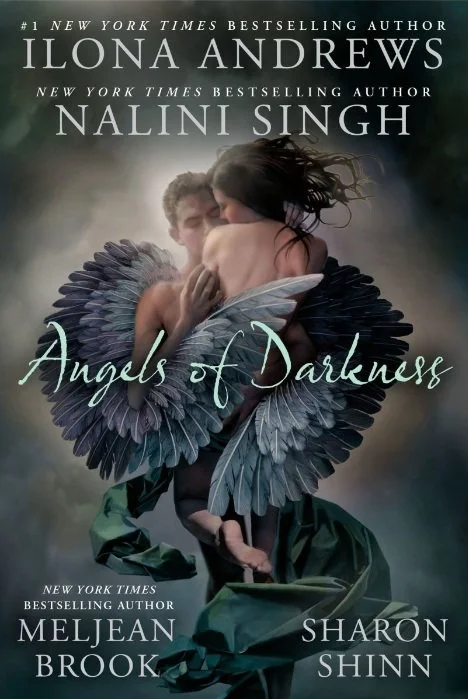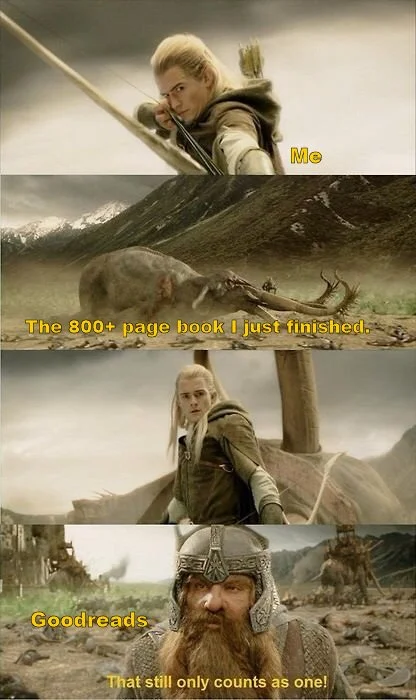Book Review: Angels of Darkness
Hello Dear Reader!
Today I want to provide a book review, although this review will be a little bit different than some of the other reviews I’ve done in the past.
I recently picked up this anthology of four stories by four different authors who are all established in the paranormal romance genre. I am a little bit of a sucker for both angels and vampires, and a few of these authors blend both those elements into their stories.
Anthologies are a neat way to experience several different writing and storytelling styles back to back in little bit sized chunks, and this is a great book that does exactly that. Two of these authors I have read previously and two of these authors were new to me. In this particular review I’m going to focus on the contrasting styles of the two authors I’m familiar with:
Nalini Singh
One of the series Nalini Singh writes is the Guild Hunter series, which is urban paranormal romance. In this series ruthless and powerful angels rule modern day earth. This alternate reality is also inhabited by vampires, who generally work in service to the angels. The short story in this anthology takes place in that world.
Power dynamics play a large role in storytelling and how Singh’s characters interact. Her characters tend to be both powerful and dangerous. Having to be on guard and choosing when and to whom to show vulnerability are key elements in building character interactions and keeping tension. In this particular short story 600 year old angel Lady Nimra and a 200 year old vampire Noel need to work together to uncover the plot behind an assassination attempt on the Lady Nimra.
Having read several of Singh’s books in the Guild Hunter series, past trauma tends to be another key element her characters have to face. When you’re immortal, the scale of trauma tends to get cranked up to 10. While these things are not always seen on page, characters suffer pretty extreme physical, emotional, and/or sexual abuse in their past. Another trademark feature in Singh’s writing is that her characters tend to be otherworldly attractive.
So your ingredients are: a world where you have immensely powerful beings all vying for control, all of whom are incredibly attractive, angsty, on edge, mistrustful, and dealing with traumatic pasts. All these things together lend themselves to especially well to the “enemies to lovers” trope. It’s not uncommon for characters to threaten each other or occasionally injure each other. The vibe tends to be a bit darker and the stakes are usually high. There tends to be a heavier focus on the sexual tension and the attraction. In this particular short story, they are trying to find the assassin before they strike again: life and death.
I’m certainly no literary critic or expert, but I would say that there are some fairly specific trends in the paranormal romance/romantasy genre that I see a lot of these days that I don’t really remember seeing that much 10 or especially 20 years ago. A lot of what I see on “BookTok” tends to be this “enemies-to-lovers” trope with very powerful beings involved, characters threatening each other, stabbing each other, and a lot more raw sexual tension. In that sense, Singh’s writing feels more contemporary. Readers who enjoy Jennifer Armentrout, would also enjoy Singh’s work. I haven’t read much of Sarah J. Maas or Rebecca Yarros, but I’m willing to bet these authors would also fall into this same type of category.
Sharon Shinn
Sharon Shinn has been publishing fantasy/sci-fi since the 90s, with her Samaria series being the one I’m the most focused on. (This series was published from 1996 to 2004) and the world in which her short story for this anthology takes place. I would actually categorize this series as Sci-Fantasy, and actually sci-fantasy done exceptionally well. The Samaria series takes place in a world where angels exist among mortals. They are the life blood of the planet, keeping things peaceful by flying to high altitudes and singing to their god Jovah who then changes the weather, sends down food or medicine, and whatever else the inhabitants of Samaria might need. If the different nations or tribes of Samaria do not gather once a year and sing together on the plains, Jovah will smite them.
In contrast with Singh’s world, angels are not violent or warful in Samaria, though they are very powerful physically and politically. Angels tend to be haughty and arrogant because they are revered across the land and they know they play an important role in maintaining the world. Samaria would not exist without them. These are personality traits that must often be overcome with the angel characters needing to learn compassion and humility.
In Nocturne, the short story in this anthology, a human woman meets a blind angel hiding out in an attic, largely feeling sorry for himself and trying to figure out what to do with his life now that he has lost his sight. Her initial intent is to annoy and harass him for some personal entertainment. This comes more from her mischievous and contrary nature (we all know people like this), rather than a place of “ultimate girl-boss with a chip on my shoulder feminine rage”. As such her character felt much more relatable and down to earth to me. She’s not being malicious; this isn’t about power.
Shinn’s romance elements sometimes also focus on enemies-to-lovers, though this tends to be a much more mild version than what you see in romantasy today. These are often characters who start out at odds, but grow into friendship or romance through mutual respect and admiration. There is a greater focus on the slow burn in terms of characters pining for each other. While angels in particular do tend to be highly attractive, there is less of a focus on this. Many of Shinn’s characters in the series are “plain old vanilla mortals” (to borrow a phrase from Jim Butcher).
As a result, we get stories that carry a sense of characters falling in love rather than just lusting after each other. Characters are still working through past hurts or traumatic events, although it feels like it is done in slower degrees. This is a fairly broad stroke, but my perception is the trend in current paranormal romance is to use sex as an anodyne for emotional distress and need for acceptance. "I’m feeling angry/vulnerable about my past/insecure, let’s fuck.” “You’re so perfect, I just want to worship you, let’s fuck.” “You did something incredibly hurtful and betrayed my trust, so instead of talking about it I’m going to stab you and then we’ll have angry revenge make up sex”. For me, personally, this gets tiresome to read rather quickly.
All that to say, Shinn’s approach to sexual intimacy is just handled differently. Intimacy seems to carry a bit more solemnity in her work.
Summary and closing thoughts
I’m not trying to throw shade at modern paranormal romance or smut. I’m simply highlighting the differences in how these two authors approach their craft and their stories. Different readers are going to gravitate towards different stories, styles, tropes, characters, and so on. Both authors use angels as key figures in their works. Both tell stories that involve romance. Both have very different approaches to how these elements are handled.
Honestly, I love that! I think that’s part of what makes writing and storytelling so cool. And what a neat way to juxtapose these author’s styles, by putting them in the same anthology so you can see very back-to-back how those different styles of character building and story crafting work. It highlights how an author’s unique voice and vision come through even on a similar topic like paranormal romance involving angels. That’s a pretty niche sub-genre in my opinion but when you read these two stories they couldn’t be more different.
More honesty, I never really spent much time reading anthologies before. Like, at all. This experience definitely makes me want to read more anthologies so I can get some exposure to different authors in bite sized chunks. It’s like a sampler platter, and I can quickly find out which author’s styles might really resonate with me so I can seek out more of their work. I have so little time to read these days I find myself gravitating more towards shorter stories, especially when I’m in a reading slump. I love long novels, but there is something super satisfying about finishing a book. Even a short one. And I sometimes need that little dopamine hit between longer books.
I need those shorter stories to hit my Goodreads reading goal. ヾ(≧ ▽ ≦)ゝ
Exploring these two different styles so closely together helps me feel good about ideas for future stories I that I want to write in popular genres. I know people always say there is nothing new under the sun. And to some degree they’re right.
*Cue soundbite from Gnomeo and Juliet “The story you are about see has been told before. A lot. And now we are going to tell it again. But different.”
One of my professors in art school talked about this, and I always appreciated his take on it. He said, yes, everything has been done before and there are no new ideas. But has it been done before by you? Use a certain type of style that already exists. Tell a certain type of story you want, even if you feel like it’s been done before. Put your own unique spin on it; tell it in your voice. So I find that rather encouraging. Do what you love. Tell the kinds of stories you want to tell. Only you can tell them in your voice.
Anyway, this is getting rather long and I’ve rambled on enough for one Sunday. Till next time dear reader, go explore some anthologies and let me know what some of your favorite short stories are. I always love hearing from you. Cheers! <3 Tiff
P.S. I didn’t forget, but I’m opting not to rate this anthology since this review was more of a comparison between styles than a true review. Ta!


